In the world of SUVs, the Ford Kuga and Dacia Bigster stand out not just for their individual strengths but also for showing the divergent paths automotive manufacturers can take. As we delve into a comprehensive comparison, we’ll explore their technical aspects and innovations that define what each vehicle brings to the marketplace.
Ford Kuga vs Dacia Bigster – Który model sprawdza się lepiej na co dzień?
Codzienna jazda, rodzina czy dłuższe trasy – tu widać różnice.
Sprawdź, czy Ford Kuga czy Dacia Bigster lepiej pasuje do Twojego stylu życia.
Design and Dimensions
The Ford Kuga showcases a contemporary design with smooth lines and a sporty stance. It measures between 4604 mm to 4645 mm in length, 1882 mm in width, and boasts a height ranging from 1673 mm to 1681 mm, making it a robust contender in the compact SUV segment. On the other hand, the Dacia Bigster, measuring 4570 mm in length and 1813 mm in width, offers an aggressive look with a higher ride height of 1705 mm, giving it a slightly more rugged appearance. Both vehicles feature five doors and seating for five, ensuring practicality for families and solo adventurers alike.
Performance and Engine Options
When it comes to engine configurations, the Ford Kuga offers a range of options including petrol, hybrid, and plugin hybrid variants. With power outputs ranging from 150 HP to a sporty 243 HP, the Kuga caters to a diverse audience. Notably, its full hybrid model has an impressive electric range of up to 69 km, making it appealing for those interested in eco-friendly driving.
In comparison, the Dacia Bigster is geared toward efficiency with its petrol MHEV, full hybrid, and LPG options, producing a maximum of 155 HP. While the power may seem lower when compared to Kuga’s offerings, the Bigster excels in fuel efficiency with consumption figures as low as 4.7 L/100 km. With a torque output of 230 Nm, the Bigster performs adequately across varied terrains, although it trails behind Kuga in acceleration, reaching 100 km/h in up to 11.2 seconds.
Transmission and Drive Type
The Ford Kuga comes with a choice of manual or automatic transmissions, including a CVT option for its hybrid models, providing smooth shifting and adaptability to the driving conditions. It features both front-wheel and all-wheel drive systems, enhancing its capability in varying environments.
Dacia's Bigster also offers manual and automated transmission options. Similar to Kuga, it provides both front-wheel and all-wheel drive variants, ensuring that drivers have the right configuration for their needs. However, its slightly lower top speed of 180 km/h, in comparison to the Kuga's 195-200 km/h, might be a consideration for performance enthusiasts.
Interior Space and Comfort
Interior comfort is a pivotal aspect for SUV buyers, and both models deliver. The Ford Kuga boasts a trunk capacity of up to 412 L, which is adequate for everyday use. Inside, quality materials and innovative tech like Ford's SYNC infotainment system enhance the driving experience.
The Dacia Bigster takes the lead with its larger trunk capacity of up to 667 L, making it a strong choice for those needing more space for cargo. The interior, while designed with functionality in mind, might not feature the same level of luxury as the Kuga, fitting its pricing and positioning within the market.
Safety and Efficiency
Safety is paramount in the SUV segment, and both manufacturers have equipped their models with various safety features. The Kuga, known for its Euro NCAP ratings, is equipped with advanced safety tech, ensuring high levels of protection for occupants. Its CO2 emissions range from 20 to 145 g/km, depending on the variant, showcasing a strong focus on efficiency.
The Dacia Bigster, with CO2 emissions ranging from 106 to 137 g/km, also meets modern efficiency standards while providing a value-oriented safety package. Although it may lack some of the advanced features found in the Kuga, it offers essential safety systems that many families will find adequate.
Conclusion
In summary, both the Ford Kuga and the Dacia Bigster target distinct customer preferences within the compact SUV landscape. The Kuga leans toward performance, advanced technology, and a more luxurious interior, making it suitable for those who desire more in terms of features. Conversely, the Bigster stands out for its practicality, larger cargo space, and fuel efficiency, appealing to budget-conscious buyers. Ultimately, the decision between the two will depend on individual priorities, whether it be tech-savvy luxury or functional efficiency.
Szczegóły techniczne: konkretne różnice między modelami
Koszty i zużycie
Cena i efektywność to kluczowe czynniki przy zakupie auta – właśnie tu często widać największe kontrasty.
Dacia Bigster ma decydowany przewagę cenową – jego cena zaczyna się od 105400 zł, podczas gdy Ford Kuga kosztuje 175500 zł. Różnica wynosi około 70110 zł.
W spalaniu również widać różnice: Ford Kuga zużywa 2.80 L i jest tym samym wyraźny oszczędniejszy niż Dacia Bigster, który spala 4.70 L. To około 1.90 L różnicy na 100 km.
Silnik i osiągi
Moc, moment i przyspieszenie to klasyczne parametry, na których skupiają się entuzjaści – tu widać ciekawe różnice.
Pod względem mocy silnika Ford Kuga ma czytelny przewagę – 243 KM zamiast 155 KM. To różnica około 88 KM KM.
W przyspieszeniu 0–100 km/h Ford Kuga jest zauważalny szybszy – 7.30 s wobec 9.70 s. Różnica wynosi około 2.40 s sekundy.
Pod względem prędkości maksymalnej Ford Kuga jest niewielki lepszy – osiąga 200 km/h, podczas gdy Dacia Bigster kończy na 180 km/h. Różnica to około 20 km/h.
Różnica widoczna jest również w momencie obrotowym: Ford Kuga ciągnie ledwo zauważalny mocniej – 240 Nm wobec 230 Nm. Różnica to około 10 Nm.
Przestrzeń i praktyczność
Samochód rodzinny czy codzienny towarzysz – który oferuje więcej miejsca, komfortu i elastyczności?
Oba samochody oferują miejsce dla 5 osób.
Pod względem masy własnej Dacia Bigster jest minimalny lżejszy – 1425 kg wobec 1526 kg. Różnica to około 101 kg kg.
Pod względem pojemności bagażnika Dacia Bigster oferuje wyraźny więcej miejsca – 667 L wobec 412 L. To różnica około 255 L litrów.
W maksymalnej pojemności ładunkowej Dacia Bigster wypada wyraźny lepiej – do 1937 L, czyli o około 403 L więcej niż Ford Kuga.
Pod względem ładowności Ford Kuga wypada lekko lepiej – 550 kg wobec 467 kg. Różnica to około 83 kg kg.
Kto wygrywa pojedynek?
Ford Kuga okazał się przewyższa w niemal każdym aspekcie i tym samym zdobywa tytuł DriveDuel Champion!
W tym porównaniu Ford Kuga to bardziej wszechstronny wybór.
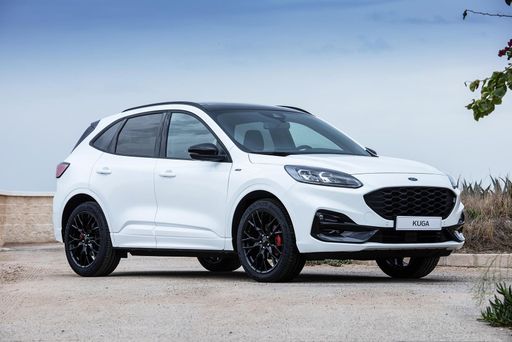 @ Ford Motor Company / Ford Media Center
@ Ford Motor Company / Ford Media Center
Ford Kuga
Ford Kuga
Ford Kuga to SUV dla tych, którzy chcą wygodnego i praktycznego auta na co dzień, a przy tym samochodu, który potrafi zaskoczyć przyjemnym zachowaniem na drodze poza miastem. Solidne wnętrze, sprytne rozwiązania i pewne prowadzenie sprawiają, że Kuga jest rozsądnym wyborem dla rodziny lub aktywnego singla — bez udawania sportowego bolidu.
szczegóły @ Ford Motor Company / Ford Media Center
@ Ford Motor Company / Ford Media Center
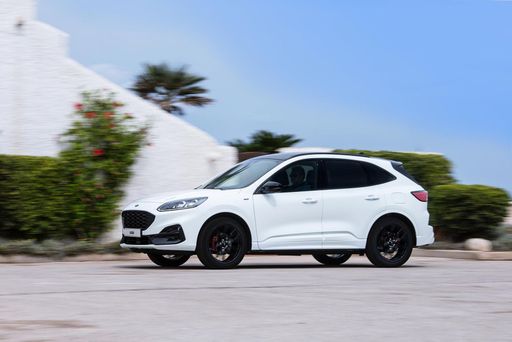 @ Ford Motor Company / Ford Media Center
@ Ford Motor Company / Ford Media Center
 @ Ford Motor Company / Ford Media Center
@ Ford Motor Company / Ford Media Center
Dacia Bigster
Dacia Bigster to SUV, który stawia na praktyczność i rozsądek — prosty w obsłudze, przestronny i z charakterem, który nie udaje więcej niż jest wart. Dla osób szukających sensownego kompromisu między ceną a funkcjonalnością to solidna propozycja, która nie sili się na luksus, za to chętnie zabierze rodzinę i bagaże tam, gdzie trzeba.
szczegóły @ Dacia / Renault Group Media
@ Dacia / Renault Group Media
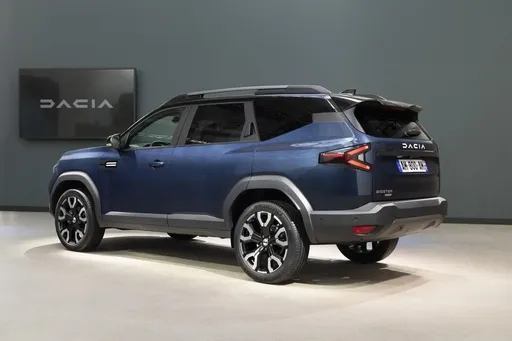 @ Dacia / Renault Group Media
@ Dacia / Renault Group Media
 @ Dacia / Renault Group Media
@ Dacia / Renault Group Media
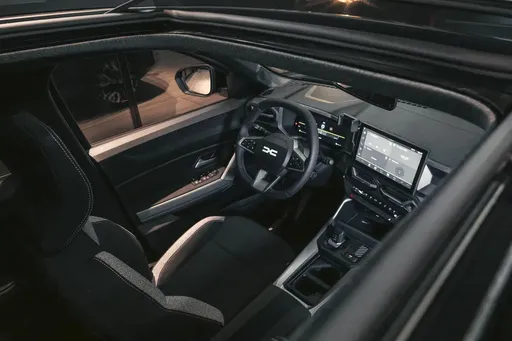 @ Dacia / Renault Group Media
@ Dacia / Renault Group Media
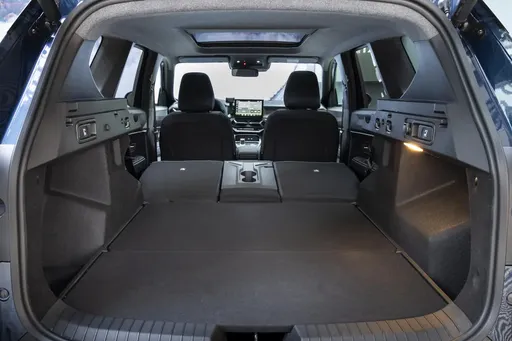 @ Dacia / Renault Group Media
@ Dacia / Renault Group Media
 @ Ford Motor Company / Ford Media Center
@ Ford Motor Company / Ford Media Center
|
 @ Dacia / Renault Group Media
@ Dacia / Renault Group Media
|
|
|
|
Koszty i Zużycie |
|
|---|---|
|
Cena
175500 - 237400 zł
|
Cena
105400 - 136100 zł
|
|
Zużycie L/100km
2.8 - 6.8 L
|
Zużycie L/100km
4.7 - 7.1 L
|
|
Zużycie kWh/100km
-
|
Zużycie kWh/100km
-
|
|
Zasięg elektryczny
68 km
|
Zasięg elektryczny
-
|
|
Pojemność baterii
1.1 - 14.4 kWh
|
Pojemność baterii
-
|
|
CO2
55 - 154 g/km
|
CO2
106 - 137 g/km
|
|
Pojemność zbiornika paliwa
42 - 54 L
|
Pojemność zbiornika paliwa
50 - 55 L
|
Wymiary i Nadwozie |
|
|---|---|
|
Typ nadwozia
SUV
|
Typ nadwozia
SUV
|
|
Miejsca siedzące
5
|
Miejsca siedzące
5
|
|
Drzwi
5
|
Drzwi
5
|
|
Masa własna
1526 - 1859 kg
|
Masa własna
1425 - 1547 kg
|
|
Pojemność bagażnika
412 L
|
Pojemność bagażnika
510 - 667 L
|
|
Długość
4604 - 4645 mm
|
Długość
4570 mm
|
|
Szerokość
1882 mm
|
Szerokość
1813 mm
|
|
Wysokość
1673 - 1681 mm
|
Wysokość
1705 mm
|
|
Maksymalna pojemność bagażnika
1534 L
|
Maksymalna pojemność bagażnika
1813 - 1937 L
|
|
Ładowność
541 - 550 kg
|
Ładowność
383 - 467 kg
|
Silnik i Wydajność |
|
|---|---|
|
Typ silnika
Benzyna, Pełna Hybryda, Hybryda Plug-in
|
Typ silnika
Mild Hybrid Benzyna, Pełna Hybryda, LPG
|
|
Skrzynia biegów
Manuel, Automatyczna
|
Skrzynia biegów
Manuel, Automatyczna
|
|
Szczegóły skrzyni biegów
Manualna skrzynia biegów, Skrzynia CVT, Automatyczna skrzynia biegów
|
Szczegóły skrzyni biegów
Manualna skrzynia biegów, Zautomatyzowana manualna
|
|
Rodzaj napędu
Napęd na przednie koła, Napęd na cztery koła
|
Rodzaj napędu
Napęd na cztery koła, Napęd na przednie koła
|
|
Moc KM
150 - 243 KM
|
Moc KM
130 - 155 KM
|
|
Przyspieszenie 0-100km/h
7.3 - 9.9 s
|
Przyspieszenie 0-100km/h
9.7 - 11.2 s
|
|
Maksymalna prędkość
195 - 200 km/h
|
Maksymalna prędkość
180 km/h
|
|
Moment obrotowy
240 Nm
|
Moment obrotowy
230 Nm
|
|
Liczba cylindrów
3 - 4
|
Liczba cylindrów
3 - 4
|
|
Moc kW
111 - 178 kW
|
Moc kW
96 - 115 kW
|
|
Pojemność silnika
1496 - 2488 cm3
|
Pojemność silnika
1199 - 1799 cm3
|
Ogólne |
|
|---|---|
|
Rok modelowy
2025
|
Rok modelowy
2025
|
|
Klasa efektywności CO2
E, D, B
|
Klasa efektywności CO2
E, D, C
|
|
Marka
Ford
|
Marka
Dacia
|
Jakie wersje napędu oferuje Ford Kuga?
Ford Kuga jest dostępny z napędem Napęd na przednie koła albo Napęd na cztery koła.
Wyświetlane ceny i dane są szacunkowe, oparte na niemieckich cenach katalogowych i mogą się różnić w zależności od kraju. Te informacje nie stanowią wiążącej oferty.
